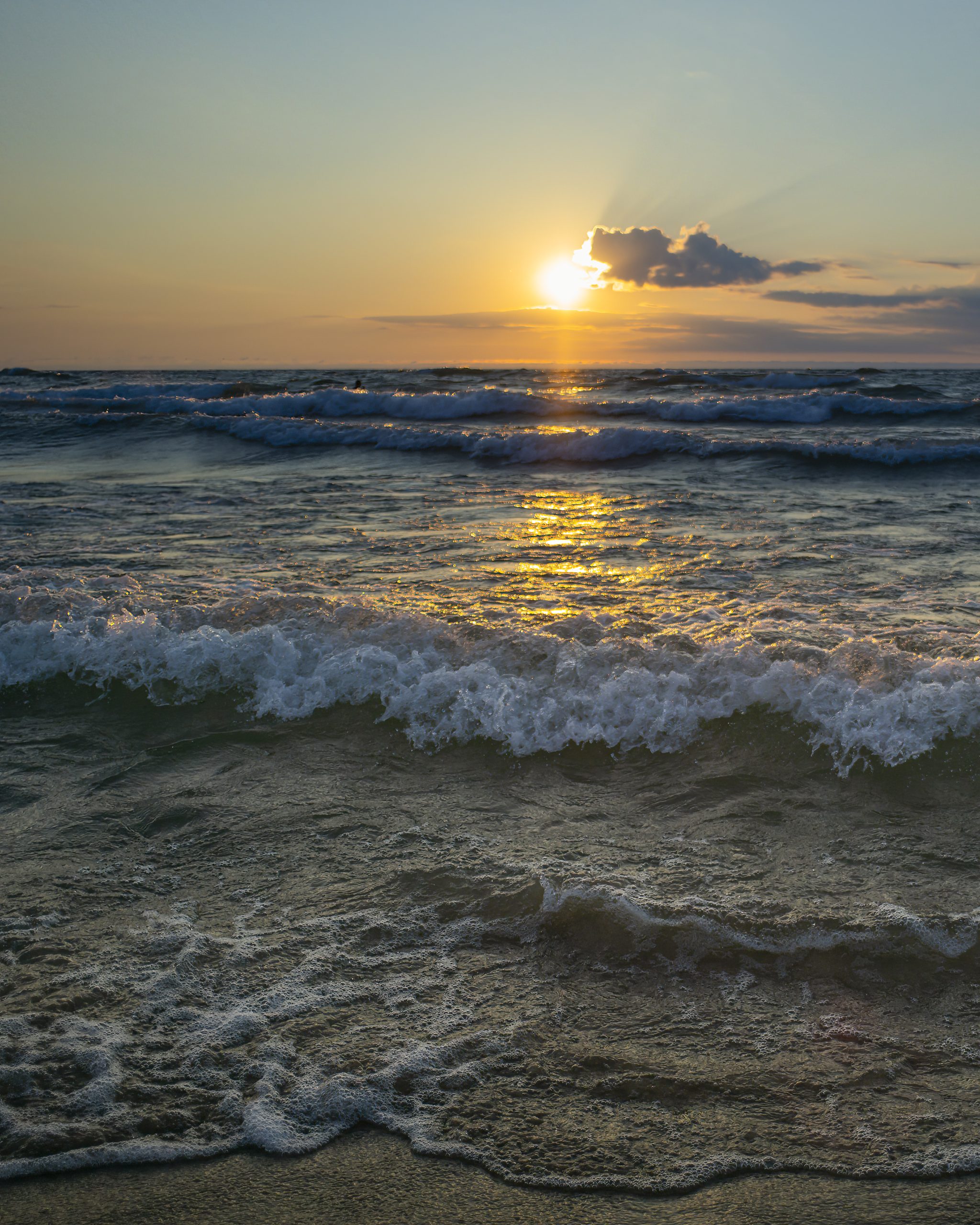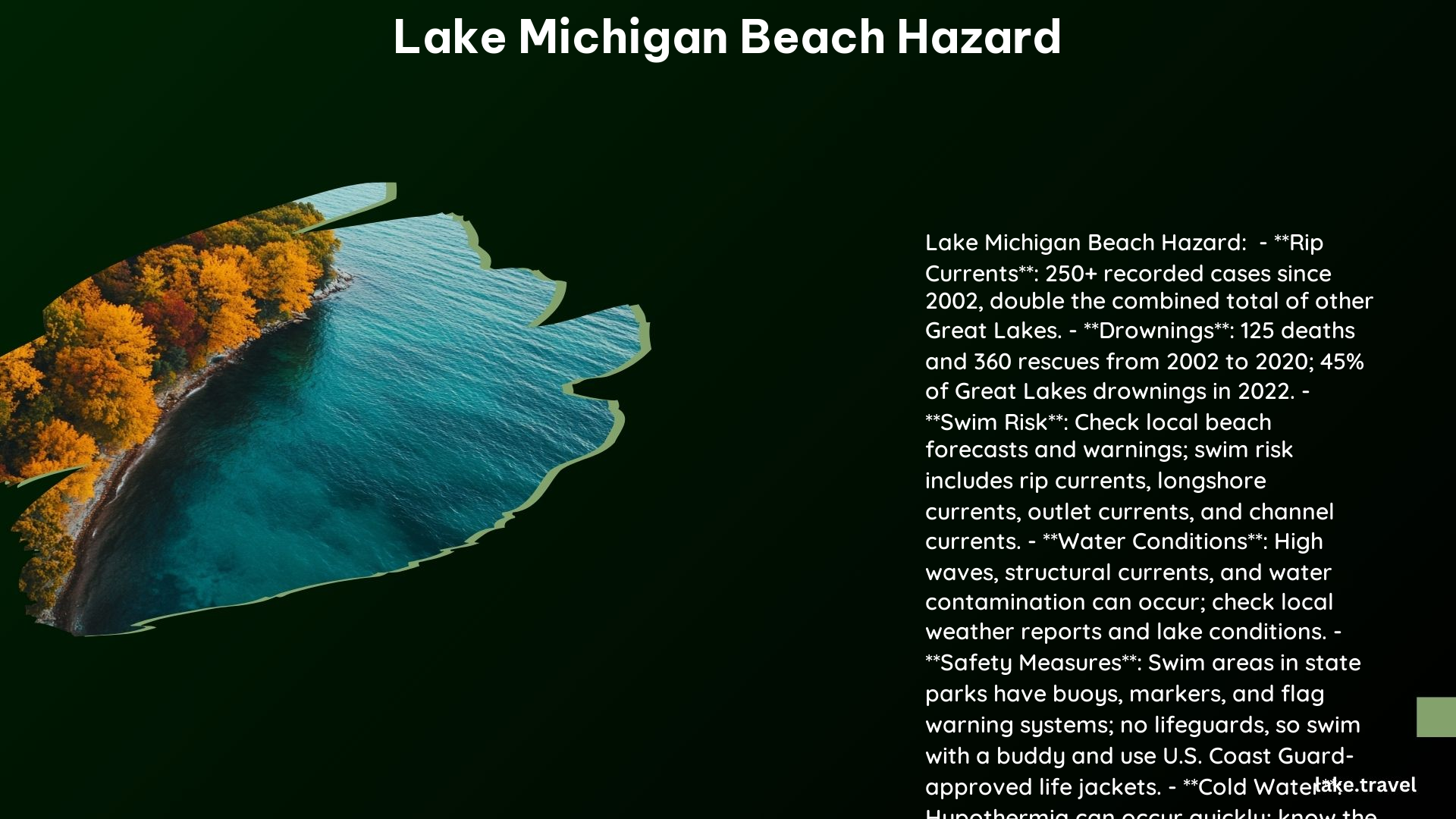Lake Michigan, one of the five Great Lakes, is known for its beauty and recreational opportunities. However, it also poses significant hazards for swimmers and beachgoers. Understanding these risks and taking necessary precautions is crucial for a safe and enjoyable experience.
Swim Risk and Beach Status

Lake Michigan’s beaches can have varying swim risk and beach status, which are important to be aware of before entering the water.
Swim Risk Categories
- Low: Calm conditions, suitable for swimming.
- Moderate: Waves and currents are present, but swimming is still possible with caution.
- High: Strong waves and currents make swimming hazardous.
- Dangerous: Swimming is not recommended due to extreme conditions.
Beach Status
- Open: Beaches are open for swimming.
- Closed: Beaches are closed due to hazardous conditions.
Rip Currents

Rip currents are a significant hazard on Lake Michigan beaches, and understanding how to identify and respond to them is crucial for safety.
Definition
A rip current is a strong, localized current that moves away from the shore, often through breaking waves.
Characteristics
- Fastest and strongest near the surface.
- Can pull swimmers out to deeper waters at speeds up to eight feet per second.
Signs of Rip Currents
- Discolored or foamy water.
- Lack of breaking waves.
- A channel of churning water.
What to Do if Caught in a Rip Current
- Don’t fight the current: Trying to swim against a rip current can quickly exhaust you.
- Flip, Float, and Follow: A drowning survival technique by the Great Lakes Surf Rescue Project.
Wave Heights
Wave heights on Lake Michigan can significantly impact the safety of swimmers and beachgoers.
Impact on Swimming
- High waves can make swimming hazardous.
- Waves can cause rip currents and structural currents.
Safety Tips
- Check the forecast: Know the expected wave heights and swim risk before heading to the beach.
- Swim at lifeguarded beaches: If possible, swim at beaches with lifeguards on duty.
- Designate a water watcher: Have someone dedicated to watching the water for swimmers.
Additional Safety Measures
Beyond understanding the specific hazards, there are several other safety measures to consider when visiting Lake Michigan beaches.
Cold Water
Hypothermia can occur quickly in cold water. Be prepared and take precautions.
Heat
Be aware of heat exhaustion and heat stroke, especially during hot summer days.
Life Jackets
Always wear U.S. Coast Guard-approved life jackets, especially for children and inexperienced swimmers.
Emergency Response
Know what to do in case of an emergency, including calling 911 and using lifesaving devices.
Resources
There are several resources available to help beachgoers stay informed and safe on Lake Michigan.
- National Weather Service (NWS): Provides beach forecasts, swim risk, and weather conditions.
- Indiana Dunes National Park: Offers beach safety information and resources.
- Michigan Department of Natural Resources: Provides information on Great Lakes water safety and state park swim areas.
References
- Manistee News. (2024, June 18). Lake Michigan beaches under dangerous swimming conditions. Retrieved from https://www.manisteenews.com/news/article/dangerous-lake-michigan-conditions-19520821.php
- National Park Service. (2024, July 8). Beach Safety – Indiana Dunes National Park. Retrieved from https://www.nps.gov/indu/planyourvisit/beach-safety.htm
- National Weather Service. (n.d.). Beach Hazards – Know Before You Go. Retrieved from https://www.weather.gov/mkx/SwimmingSafelyOnTheGreatLakes
- National Weather Service. (n.d.). Great Lakes Beach Hazards. Retrieved from https://www.weather.gov/greatlakes/beachhazards
- Michigan Department of Natural Resources. (n.d.). Great Lakes water safety. Retrieved from https://www.michigan.gov/dnr/education/safety-info/beach-safety.
